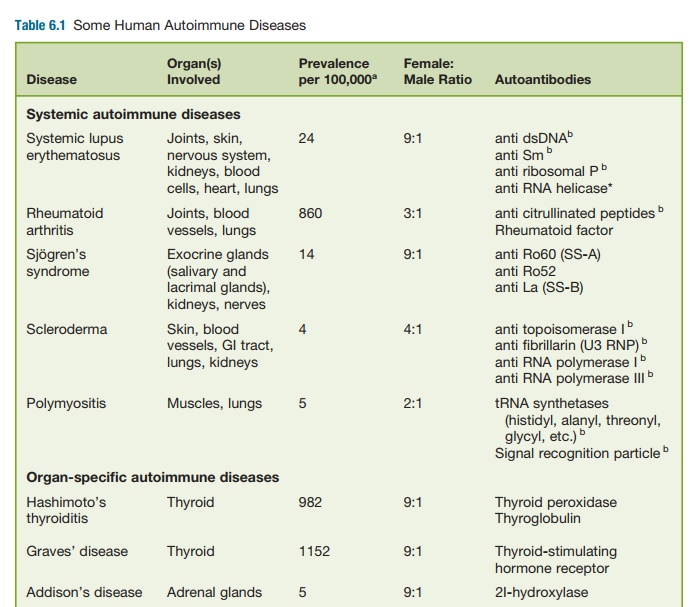Chapter: Essential Clinical Immunology: Autoimmunity
Epidemiology of Autoimmune Disease
Epidemiology of Autoimmune Disease
There are nearly 100 different forms of auto-immune
disease, making these disorders a major cause of chronic illness, affect-ing up
to 3 percent of the general population. Nearly any organ can be affected by
either systemic or organ-specific autoim-mune disease (Table 6.1). Women make
up nearly 75 percent of all individuals afflicted by autoimmune disease, making
these disorders one of the ten leading causes of death in women less than
sixty-five years old. However, the female-to-male ratio var-ies widely among
different diseases, being as high as 9:1 in SLE, Sjögren’s syndrome, and
autoimmune thyroiditis and as low as 1:1 in TID, Goodpasture’s syndrome, and
vitiligo (Table 6.1). The mean age of onset also varies widely, with some
disorders typically occurring early in childhood (e.g., TID, juvenile
rheumatoid arthritis), oth-ers in the childbearing years (ages 15–45, e.g.,
SLE), and still others in later life (e.g., Sjögren’s syndrome). There may be
strik-ing ethnic/racial predispositions to auto-immune disease. For example,
SLE is about three times more prevalent in individuals of African, Asian, or
Latin ancestry than in individuals of European ancestry, whereas Sjögren’s
syndrome and multiple sclerosis are more prevalent in those of European
ancestry. The racial/ethnic differences are likely to reflect differences in
the frequen-cies of disease susceptibility genes. The costs of these disorders
to society are enor-mous. Rheumatoid arthritis (RA) affects 2.1 million
Americans (1.5 million women and 600,000 men) at an annual cost of about $6,000
per patient (direct medical costs and indirect costs such as absence from
work). Lupus affects 500,000 Americans at an esti-mated annual cost of $13,000
per patient, a total $6.5 billion per year.


Related Topics